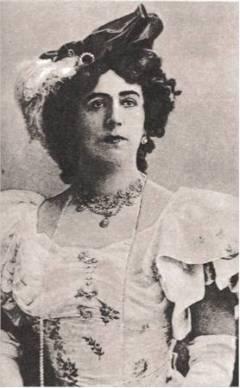Rachmaninov’s Vocalise
Rachmaninov’s Vocalise
“Vocalise” just means it’s a thing for a human voice, a vocal piece. It needs that name because, being for the voice, it is obviously some sort of song, but in this case it has no words at all, so all the artistry is in the shape of the vocal line. There are no words to give you hints about what feelings it addresses, what sort of thing you ought to be emoting about while it is going on.
Rachmaninov - Vocalise
Vocalise dates back to the mid-18th century. In the early 20th century, many orchestral scores incorporated wordless choruses (especially female choruses) for coloristic effects, and such choruses may be found in works by Debussy, Ravel, Vaughan Williams, Holst, and in many film scores.

Sergei Rachmaninov
Vocalise, Op. 34, No. 14 is a song by Sergei Rachmaninoff, published in 1912 as the last of his Fourteen Songs. The Opus 34 group contains some of the Rachmaninov's best-loved songs, each of which was tailored to the vocal personality of a particular singer with whom he was acquainted from the Bolshoi opera. ‘Vocalise’ was dedicated to soprano Antonina Nezhdanova.

Antonina Nezhdanova
Although the original publication stipulates that the song may be sung by either soprano or tenor voice, it is usually chosen to be performed by a soprano. As with many classical vocal pieces, it is transposed into a variety of keys, allowing performers to choose a vocal range more suitable to their natural voice, so that artists who may not have the higher range of a soprano can nevertheless perform the song.

Vocalise, edition 1912
The nature of the melody makes it easily adaptable to instrumental writing. It can be performed, without alteration (except for transposition), by almost any instrument. The accompanying texture, while rich, is carefully written with every element clearly defined, making it adaptable to larger instrumental combinations. Rachmaninov himself created two orchestral versions, one with soprano and one without. Many other composers have also made transcriptions for a variety of ensembles.

Sergei Rachmaninov
What is so special about this piece? Well, it is vaguely melancholy and haunting, as so much Russian music is, but most of all it has this uncanny ability to escape your grasp. If you know it, you will recognize it instantly by the first two or three notes. But you’ll never be able to sing along with it.

Vocalise, transcription for orchestra
Much great music is like that. The skill of the composer is tricking you into thinking that you are listening to something very simple. Each moment feels simple. But if you try to sing along, or remember it afterwards, you find it has escaped you.

Sergei Rachmaninov
This is clearly one of the greatest melodies of all time and one of the few members of an elite repertory niche: popular, non-avant-garde vocal works without text.

Vocalise, sheet music








